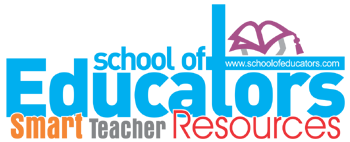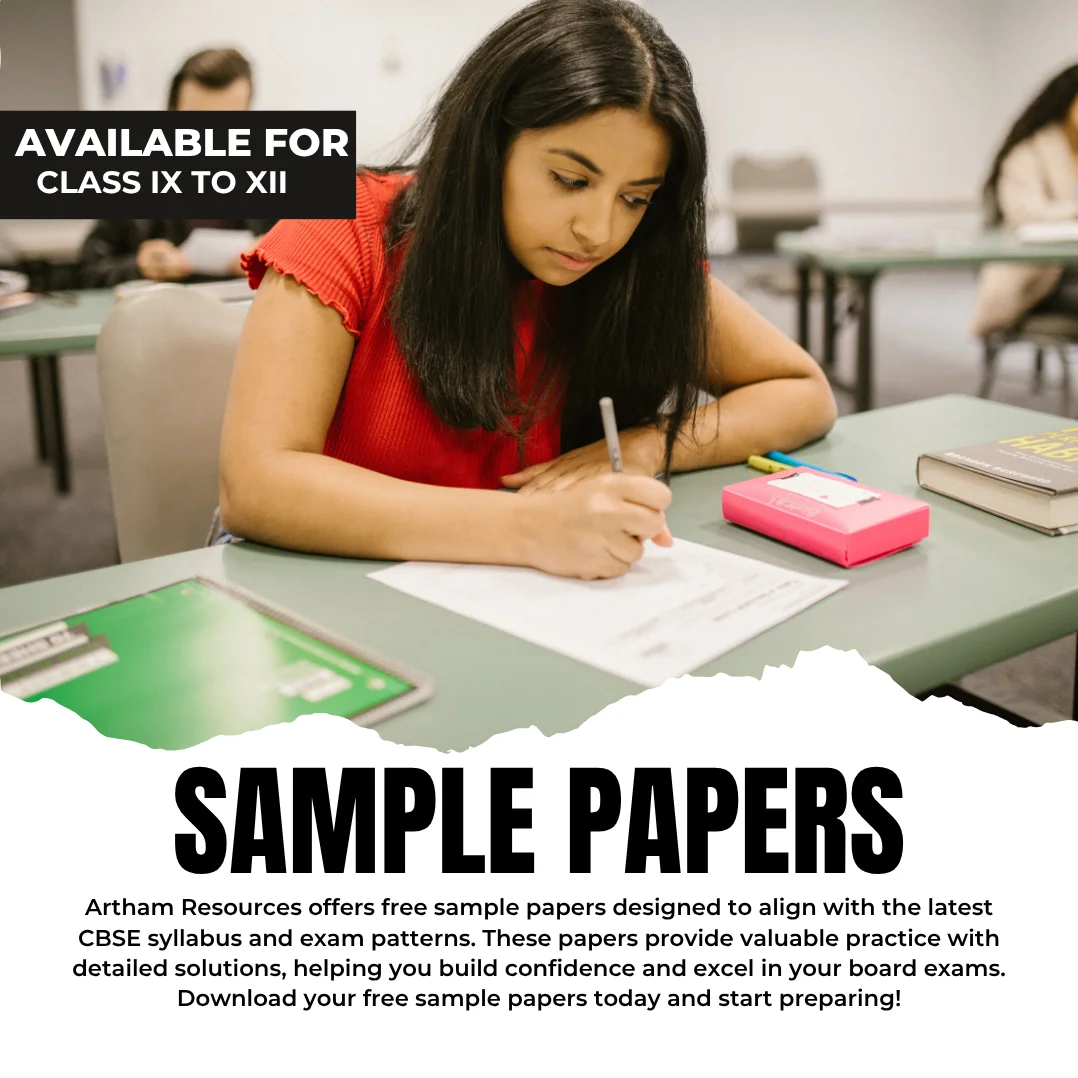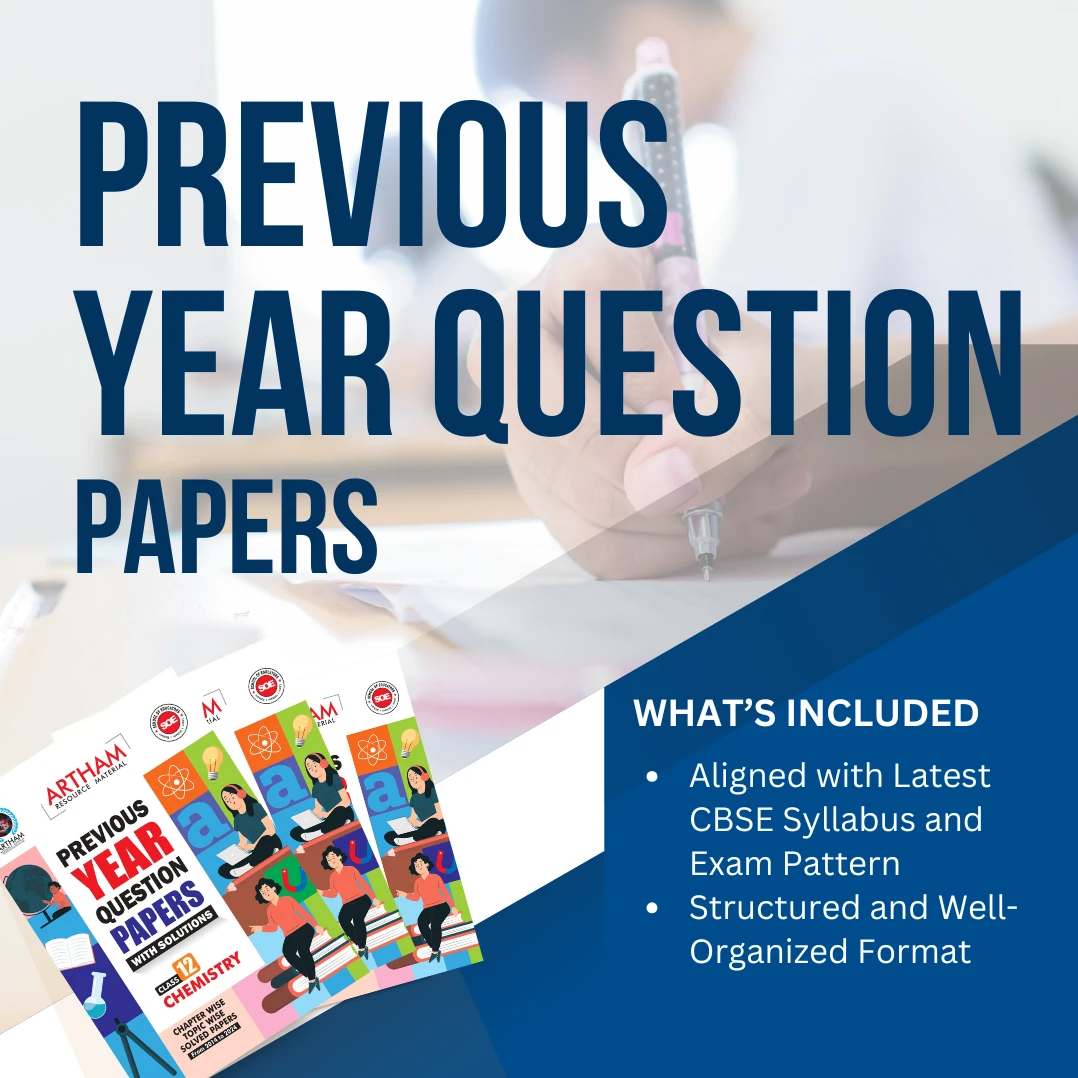Shop Left Sidebar
- CBSE
- Chapter Wise Topic Wise Notes
- Class 10
- Class 9
- Competency-Based Question Bank
- Competitive Exams & Aptitude Tests
- Comprehensive Viva Voice
- Courses
- CUET
- Daily Practice Paper (DPP)
- Diagnostic Assessment
- eBooks
- For New School
- Foundation and Olympiad Study Material
- Gift for Students
- Gift for Teachers
- Half Yearly Sample Question Paper with Solution
- Holiday Homework
- Illustrative Charts
- Journal
- Kindergarten
- Lesson Plan
- Life Skills
- Line by Line Questions
- Mind Maps
- Must Buy
- NCERT Exemplar Solutions
- NCERT Solutions
- Notes
- POWERPOINT PRESENTATIONS
- Pre Launch Stage
- Premium WhatsApp Group
- Previous Year Question Papers
- Previous Year Question Papers with Solutions
- Print version of SOP
- Sample Paper
- Sample Paper with Solutions
- Self Development
- Split -up Syllabus
- Sports and Physical Education
- Standard Operating Manuals
- Study Materials for Students
- Teachers Manual with Lesson Plans
Best seller
-
-100%
₹ 50.00Original price was: ₹ 50.00.₹ 0.00Current price is: ₹ 0.00. -
-100%
₹ 50.00Original price was: ₹ 50.00.₹ 0.00Current price is: ₹ 0.00. -
-100%
₹ 50.00Original price was: ₹ 50.00.₹ 0.00Current price is: ₹ 0.00. -
-100%
₹ 299.00Original price was: ₹ 299.00.₹ 0.00Current price is: ₹ 0.00.
- CBSE
- Chapter Wise Topic Wise Notes
- Class 10
- Class 9
- Competency-Based Question Bank
- Competitive Exams & Aptitude Tests
- Comprehensive Viva Voice
- Courses
- CUET
- Daily Practice Paper (DPP)
- Diagnostic Assessment
- eBooks
- For New School
- Foundation and Olympiad Study Material
- Gift for Students
- Gift for Teachers
- Half Yearly Sample Question Paper with Solution
- Holiday Homework
- Illustrative Charts
- Journal
- Kindergarten
- Lesson Plan
- Life Skills
- Line by Line Questions
- Mind Maps
- Must Buy
- NCERT Exemplar Solutions
- NCERT Solutions
- Notes
- POWERPOINT PRESENTATIONS
- Pre Launch Stage
- Premium WhatsApp Group
- Previous Year Question Papers
- Previous Year Question Papers with Solutions
- Print version of SOP
- Sample Paper
- Sample Paper with Solutions
- Self Development
- Split -up Syllabus
- Sports and Physical Education
- Standard Operating Manuals
- Study Materials for Students
- Teachers Manual with Lesson Plans
Showing 65–80 of 563 results
-
-62%
Lesson Plan Class 6 Science Chapter 4 GETTING TO KNOW PLANTS
₹ 50.00Original price was: ₹ 50.00.₹ 19.00Current price is: ₹ 19.00.This lesson plan covers Chapter 4 of the Class 6 Science curriculum, titled “Getting to Know Plants.” The chapter introduces students to the various parts of plants and their functions. Students will explore the structure and role of roots, stems, leaves, flowers, and fruits. They will also learn to classify plants into herbs, shrubs, and trees based on their characteristics.
-
-62%
Lesson Plan Class 6 Science Chapter 5 BODY MOVEMENTS
₹ 50.00Original price was: ₹ 50.00.₹ 19.00Current price is: ₹ 19.00.This lesson plan covers Chapter 5 of the Class 6 Science curriculum, focusing on “Body Movements.” The chapter explores the different types of movements that the human body is capable of, including skeletal movements, muscular movements, and the role of joints in facilitating these movements. Students will learn about the structure and function of bones, muscles, and joints, and how they work together to enable actions such as walking, running, bending, and lifting.
-
-62%
Lesson Plan Class 6 Science Chapter 6 the living Organisms - Characteristics and Habitats
₹ 50.00Original price was: ₹ 50.00.₹ 19.00Current price is: ₹ 19.00.This lesson plan focuses on Chapter 6 of the Class 6 Science curriculum, “The Living Organisms – Characteristics and Habitats.” The chapter introduces students to the diverse characteristics of living organisms and their habitats. Students will explore the fundamental features of living things such as growth, reproduction, response to stimuli, and adaptation to environments.
-
-62%
Lesson Plan Class 6 Science Chapter 7 Motion and Measurement of Distances
₹ 50.00Original price was: ₹ 50.00.₹ 19.00Current price is: ₹ 19.00.This lesson plan covers Chapter 7 of the Class 6 Science curriculum, focusing on “Motion and Measurement of Distances.” The chapter introduces students to the concept of motion, types of motion (uniform and non-uniform), and methods of measuring distances. Students will explore the basic principles of motion, including speed, velocity, and acceleration, and learn about different units of measurement used for distance.
-
-62%
Lesson Plan Class 6 Science Chapter 8 Light, Shadows and Reflections
₹ 50.00Original price was: ₹ 50.00.₹ 19.00Current price is: ₹ 19.00.This lesson plan covers Chapter 8 of the Class 6 Science curriculum, focusing on “Light, Shadows and Reflections.” The chapter introduces students to the properties of light and its behavior when it encounters different objects and surfaces. Students will explore the formation of shadows, the concept of reflection, and the laws governing the reflection of light.
-
-62%
Lesson Plan Class 6 Science Chapter 9 Electricity and Circuits
₹ 50.00Original price was: ₹ 50.00.₹ 19.00Current price is: ₹ 19.00.This lesson plan covers Chapter 9 of the Class 6 Science curriculum, focusing on “Electricity and Circuits.” The chapter introduces students to the fundamentals of electricity, electric circuits, and their components. Students will learn about electric conductors and insulators, types of circuits (series and parallel), and the role of switches, bulbs, and batteries in a circuit.
-
-62%
Lesson Plan Class 6 Science Chapter 10 Fun with Magnets
₹ 50.00Original price was: ₹ 50.00.₹ 19.00Current price is: ₹ 19.00.This lesson plan covers Chapter 10 of the Class 6 Science curriculum, titled “Fun with Magnets.” The chapter introduces students to the fascinating world of magnets, their properties, and their interactions with different materials. Students will explore the types of magnets (natural and artificial), magnetic poles (north and south), and magnetic materials.
-
-62%
Lesson Plan Class 6 Science Chapter 11 AIR AROUND US
₹ 50.00Original price was: ₹ 50.00.₹ 19.00Current price is: ₹ 19.00.This lesson plan covers Chapter 11 of the Class 6 Science curriculum, focusing on “Air Around Us.” The chapter introduces students to the composition of air and its importance for life on Earth. Students will learn about the various components of air, including oxygen, nitrogen, carbon dioxide, and other gases.
-
-62%
Lesson Plan Class 6 Mathematics Chapter 1 Knowing our Numbers
₹ 50.00Original price was: ₹ 50.00.₹ 19.00Current price is: ₹ 19.00.This lesson plan covers Chapter 1 of the Class 6 Mathematics curriculum, focusing on “Knowing our Numbers.” The chapter introduces students to the concept of numbers and their various forms, including natural numbers, whole numbers, integers, and rational numbers.
-
-62%
Lesson Plan Class 6 Mathematics Chapter 2 Whole Numbers
₹ 50.00Original price was: ₹ 50.00.₹ 19.00Current price is: ₹ 19.00.This lesson plan covers Chapter 2 of the Class 6 Mathematics curriculum, focusing on “Whole Numbers.” The chapter delves into the properties and operations involving whole numbers, including addition, subtraction, multiplication, and division. Students will explore concepts such as place value, rounding off numbers, and estimating results using whole numbers.
-
-62%
Lesson Plan Class 6 Mathematics Chapter 3 Playing with Numbers
₹ 50.00Original price was: ₹ 50.00.₹ 19.00Current price is: ₹ 19.00.This lesson plan covers Chapter 3 of the Class 6 Mathematics curriculum, titled “Playing with Numbers.” The chapter focuses on exploring various number patterns, puzzles, and mathematical games. Students will engage in activities that enhance their understanding of factors, multiples, divisibility rules, and other number properties.
-
-62%
Lesson Plan Class 6 Mathematics Chapter 4 Basic Geometrical ideas
₹ 50.00Original price was: ₹ 50.00.₹ 19.00Current price is: ₹ 19.00.This lesson plan covers Chapter 4 of the Class 6 Mathematics curriculum, focusing on “Basic Geometrical Ideas.” The chapter introduces students to fundamental concepts in geometry, including points, lines, line segments, rays, angles, triangles, quadrilaterals, circles, and polygons. Students will explore the properties and characteristics of these geometric figures through visual representations, practical examples, and hands-on activities.
-
-62%
Lesson Plan Class 6 Mathematics Chapter 5 Understanding Elementary Shapes
₹ 50.00Original price was: ₹ 50.00.₹ 19.00Current price is: ₹ 19.00.This lesson plan covers Chapter 5 of the Class 6 Mathematics curriculum, focusing on “Understanding Elementary Shapes.” The chapter introduces students to various elementary shapes such as triangles, quadrilaterals, circles, and polygons. Students will explore the properties, classification, and characteristics of these shapes through visual representations and hands-on activities.
-
-62%
Lesson Plan Class 6 Mathematics Chapter 6 INTEGERS
₹ 50.00Original price was: ₹ 50.00.₹ 19.00Current price is: ₹ 19.00.This lesson plan covers Chapter 6 of the Class 6 Mathematics curriculum, focusing on “Integers.” The chapter introduces students to the concept of integers, including positive and negative numbers, and their operations such as addition, subtraction, multiplication, and division.
-
-62%
Lesson Plan Class 6 Mathematics Chapter 7 FRACTIONS
₹ 50.00Original price was: ₹ 50.00.₹ 19.00Current price is: ₹ 19.00.This lesson plan covers Chapter 7 of the Class 6 Mathematics curriculum, focusing on “Fractions.” The chapter introduces students to the concept of fractions, including proper fractions, improper fractions, and mixed numbers. Students will learn about the representation of fractions on a number line, equivalent fractions, simplification, and operations involving fractions (addition, subtraction, multiplication, and division).
-
-62%
Lesson Plan Class 6 Mathematics Chapter 8 DECIMALS
₹ 50.00Original price was: ₹ 50.00.₹ 19.00Current price is: ₹ 19.00.This lesson plan covers Chapter 8 of the Class 6 Mathematics curriculum, focusing on “Decimals.” The chapter introduces students to the concept of decimals, including place value, comparison, addition, subtraction, multiplication, and division of decimals.
Teaching is one of the hardest and most important jobs in the world. We provide the support that teachers need to transform their subjects into terms that their students will understand.
- Nageen International
- B-162, 4th Floor, DDA Shed, Okhla Industrial Area Phase 1 New Delhi-110020 (India)
- WhatsApp us at +91-95208-11111
- Email: info@educatorsresource.in
- (Monday to Saturday) WhatsApp 24*7
2025 Educator Resources. All Rights Reserved.




